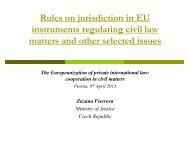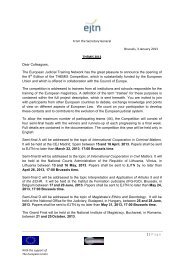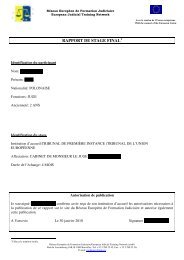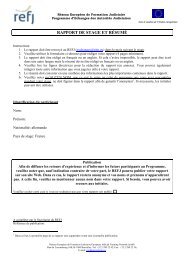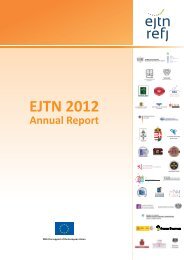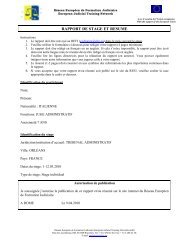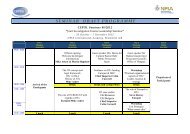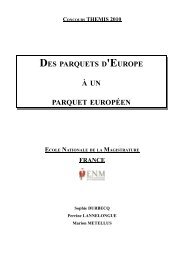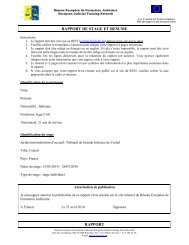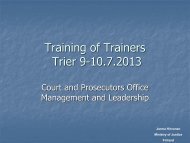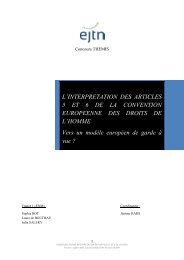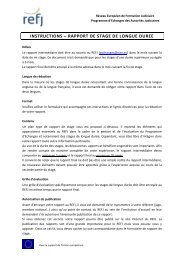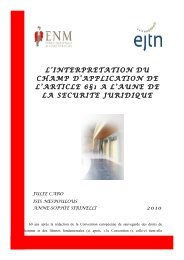European Criminal Justice - EJTN
European Criminal Justice - EJTN
European Criminal Justice - EJTN
- No tags were found...
Create successful ePaper yourself
Turn your PDF publications into a flip-book with our unique Google optimized e-Paper software.
<strong>EJTN</strong> training guideline in <strong>European</strong> <strong>Criminal</strong> <strong>Justice</strong> - Update 2011methods recommended for this area are training courses, basic seminars anddistance learning courses.The individual sub-topics of the Conventions as well as training on the Protocolcan be dealt with in specialised seminars and workshops (see below).B) Complementary e-learningTraining on this legal instrument can be completed by e-learning.C) PriorityGiven the functions outlined above, training on the Convention and its Protocolshould have top priority.D) FormatThe training format recommended for the Convention includes local, regional,and national training.V.1. Mutual legal assistance related to evidence gathering1. IntroductionObtaining evidence was traditionally done by using various international and EUinstruments. As said, the basic framework was provided by the Council of EuropeConvention on Mutual Assistance of 1959 and its additional Protocols and,within the EU, the supplementary rules introduced by the Schengen Conventionsand the EU Convention on Mutual Assistance in <strong>Criminal</strong> Matters and itsProtocol. The drawbacks of the system resulting from these arrangements havebeen, until now, a consistently slow and inefficient procedure, a variety ofdifferent rules and legal barriers arising from grounds of refusal (see above). Inits programme of measures to implement the principle of mutual recognition ofdecisions in criminal matters, the Commission outlined the following aim: toensure that evidence is admissible, to prevent its disappearance and to facilitatethe enforcement of search and seizure orders so that evidence can be quicklysecured in a criminal case. The programme looked to find feasible ways toensure that the reservations and declarations provided for in Article 5 of the1959 Convention, supplemented by Articles 51 and 52 of the CISA, the groundsfor refusal of mutual aid provided for in Article 2 of the 1959 Convention,supplemented by Article 50 CISA are not invoked, at least in the extent untilnow allowed, in the relations between EU member states. Furthermore, stepsshould be taken to draw up an instrument on the recognition of the freezing ofevidence. This was implemented by the Framework Decision on the execution oforders freezing property and evidence of 2003, although the transfer of theevidence seized has continued to be regulated under the classical mutualassistance procedures; however, in 2006, the <strong>European</strong> Commission presented aproposal to create a <strong>European</strong> Evidence Warrant (EEW) which was adopted inDecember 2008 (Council Framework Decision 2008/978/JHA of 18 December 2008on the <strong>European</strong> evidence warrant for the purpose of obtaining objects,documents and data for use in proceedings in criminal matters). The EEW appliesthe principle of mutual recognition to obtaining certain types of evidence for33



